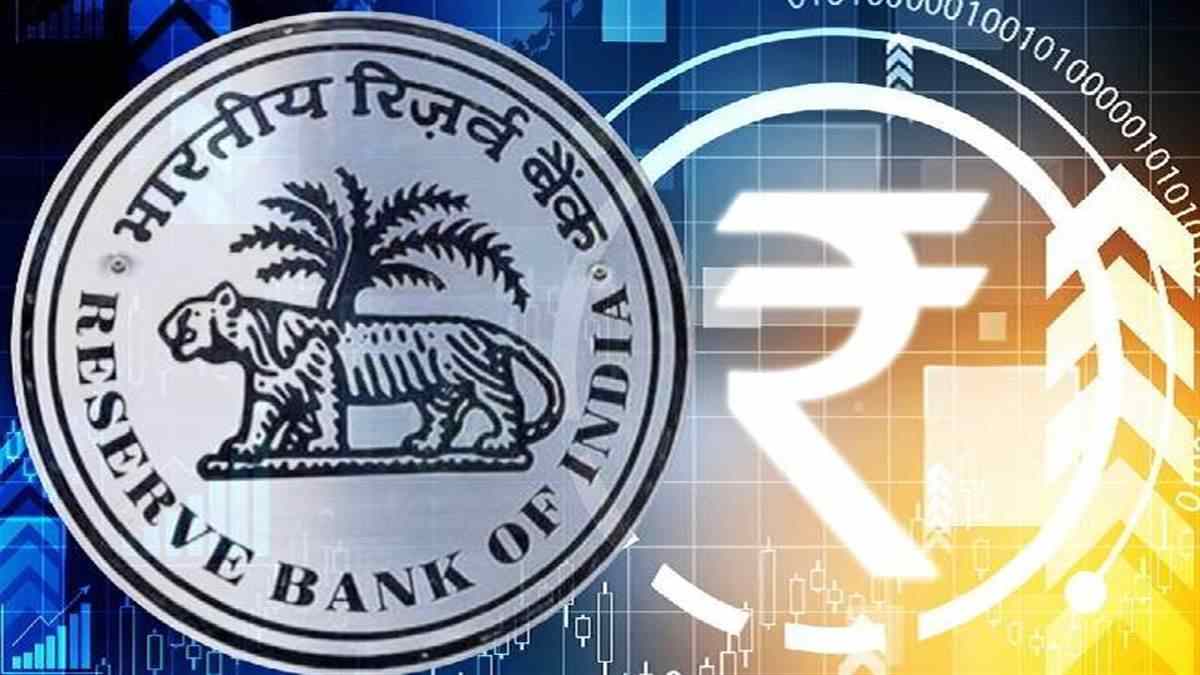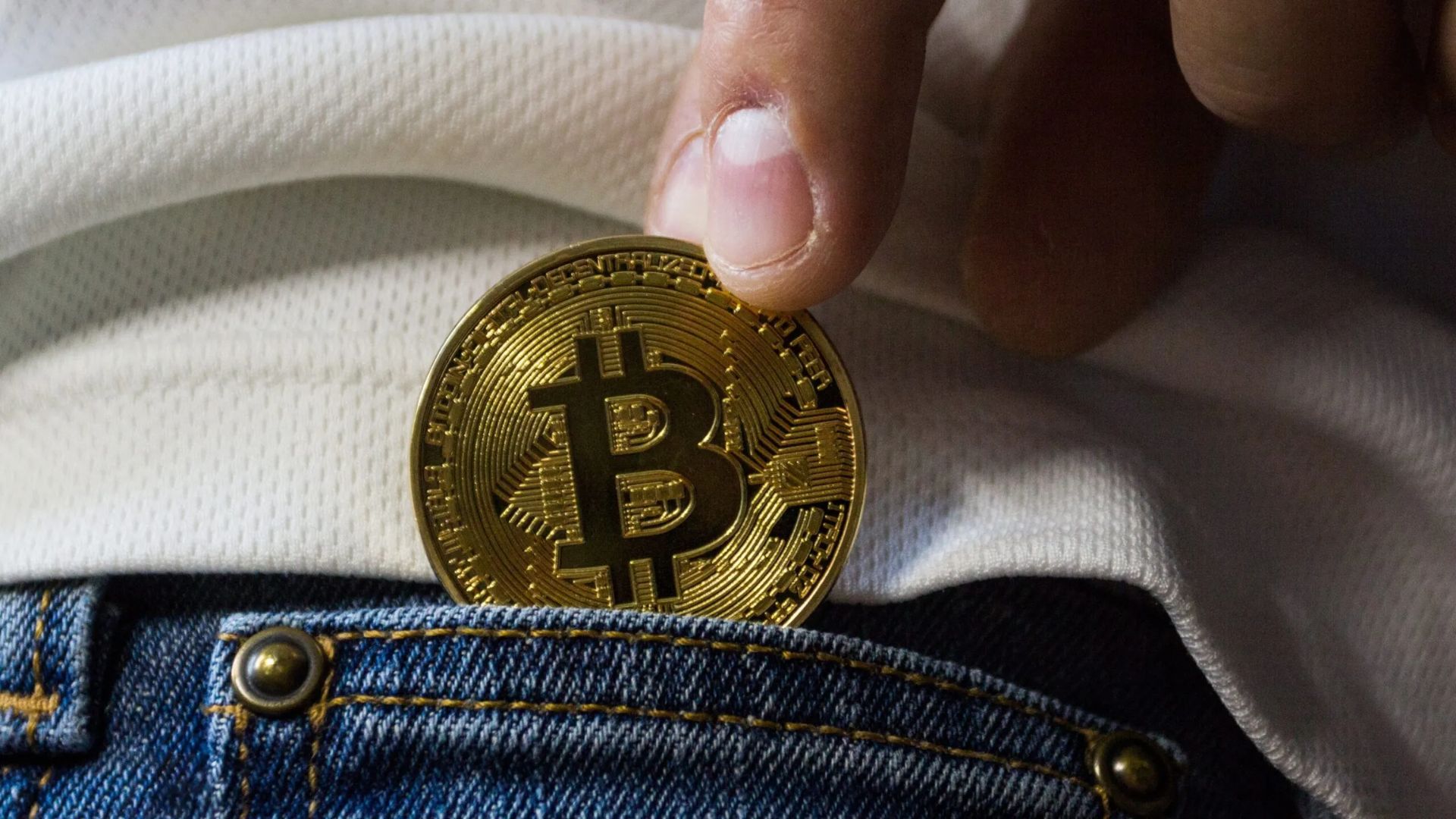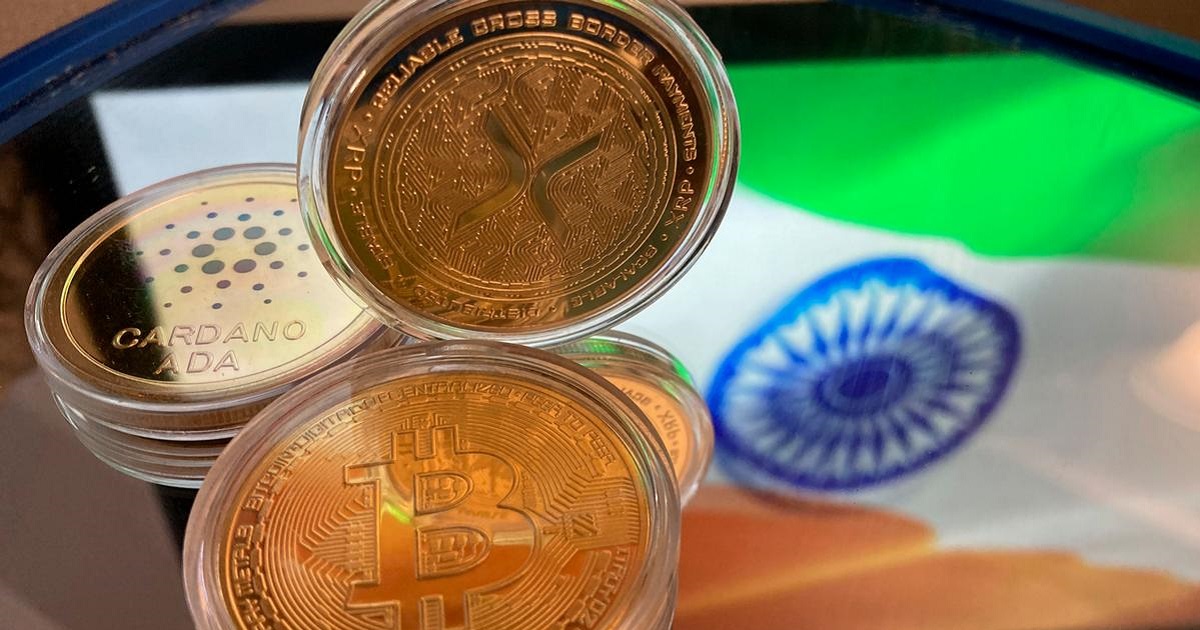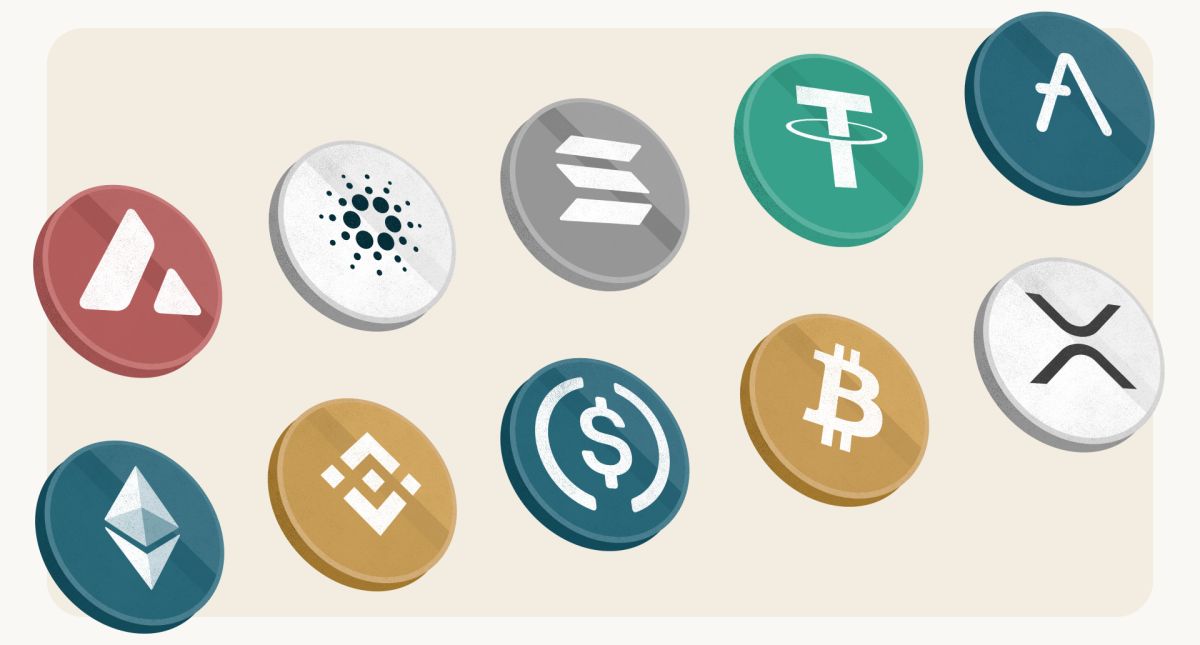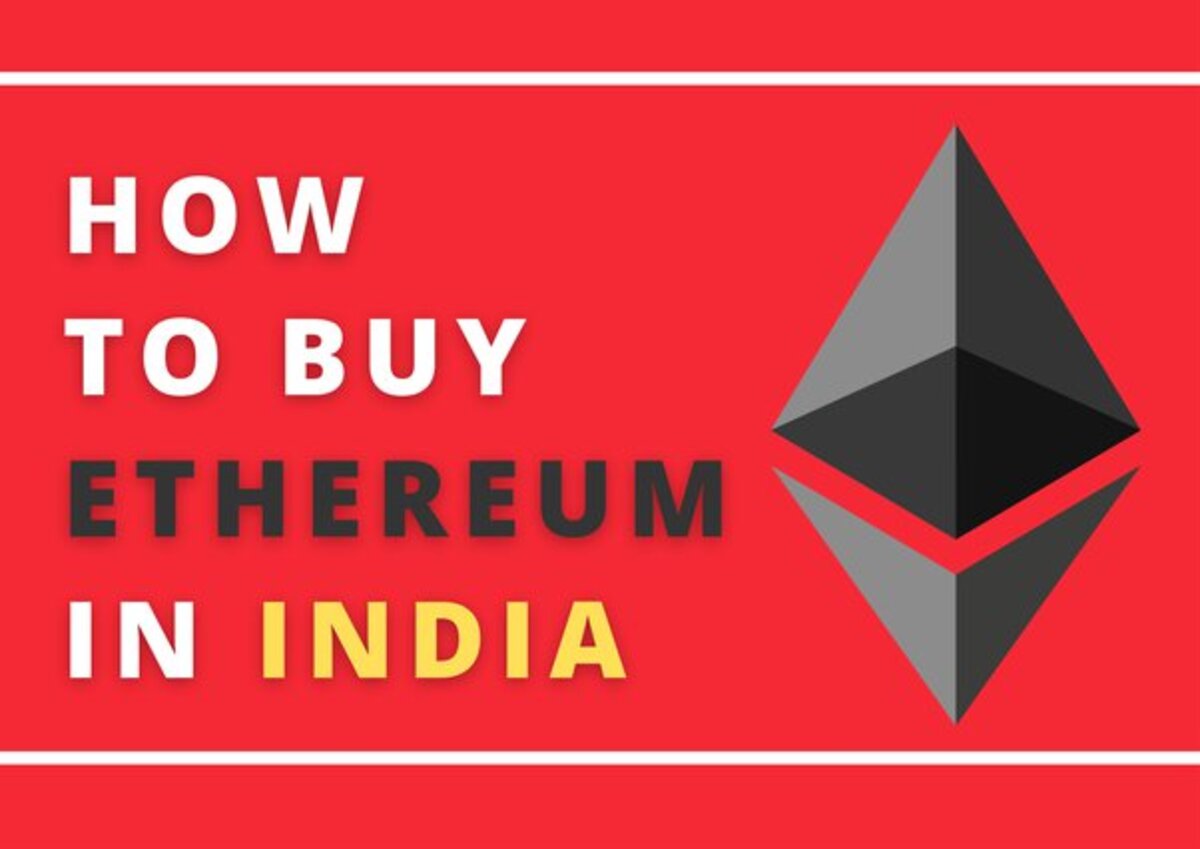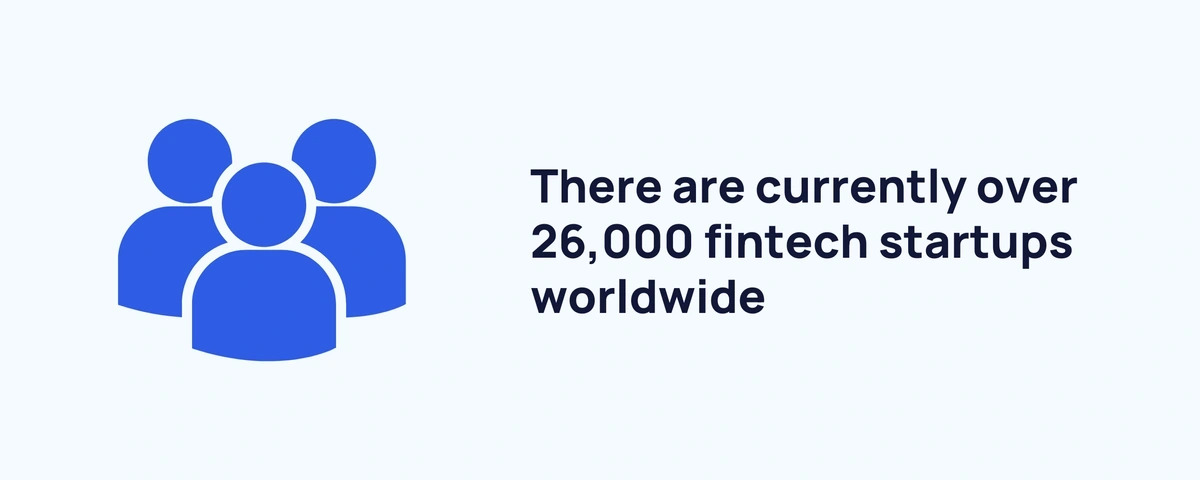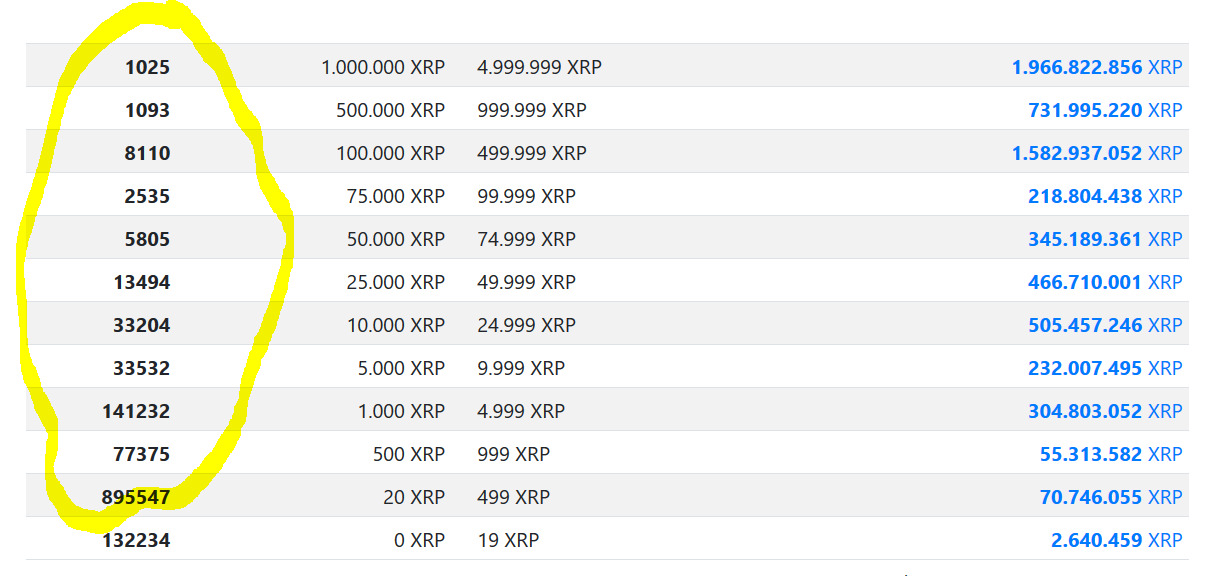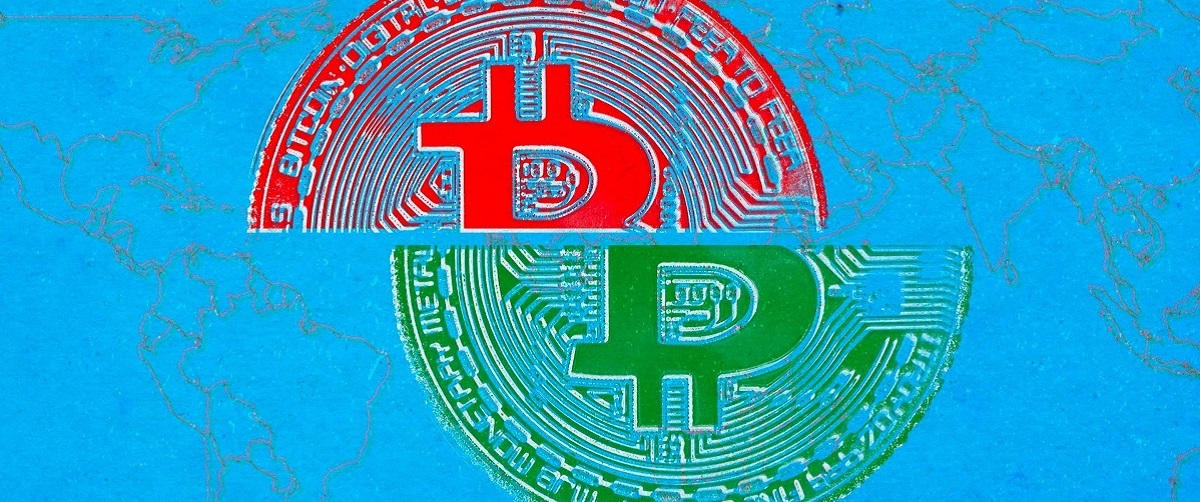What is digital currency?
Digital currency, also known as cryptocurrency, is a form of virtual or digital money that uses cryptography for security. It is decentralized and operates on a technology called blockchain, which is a decentralized and distributed ledger.
Unlike traditional forms of currency issued by governments, digital currency exists only in electronic form and doesn’t have a physical counterpart like banknotes or coins. It is based on complex mathematical algorithms and is created, stored, and transferred electronically.
One of the most famous examples of digital currency is Bitcoin, which was created in 2009 by an anonymous person or group under the pseudonym Satoshi Nakamoto. Bitcoin revolutionized the concept of digital currency and paved the way for the development of countless other cryptocurrencies.
Digital currencies offer several advantages over traditional forms of currency. They are borderless, meaning they can be sent and received anywhere in the world without the need for intermediaries like banks. Transactions can be processed faster and at lower fees compared to traditional banking systems.
Another key feature of digital currencies is their decentralized nature. They are not controlled by any single entity or government, making them resistant to censorship and interference. The transparency of blockchain technology ensures that transactions made with digital currencies can be verified and are immutable.
Today, there are thousands of digital currencies available in the market, each with its own unique features and use cases. Some popular examples include Ethereum, Ripple, Litecoin, and Bitcoin Cash.
As the popularity of digital currencies continues to grow, more businesses and individuals are embracing them as a means of payment and investment.
Popular digital currencies in India
India has seen a surge in interest and adoption of digital currencies in recent years. While Bitcoin remains the most well-known digital currency globally, several other cryptocurrencies have gained popularity among Indian investors and traders.
One of the most prominent digital currencies in India is Bitcoin (BTC). It was the first decentralized cryptocurrency to gain widespread recognition and continues to dominate the market. Bitcoin offers a secure and transparent platform for peer-to-peer transactions and has become a popular investment option.
Ethereum (ETH) is another popular digital currency in India. It is not only a cryptocurrency but also a programmable blockchain platform that allows developers to build and deploy their decentralized applications (DApps). Ethereum’s native cryptocurrency, Ether, is widely used for smart contracts and crowdfunding purposes.
Ripple (XRP) has also gained traction in India, primarily due to its focus on enabling fast and low-cost international money transfers. Ripple’s technology aims to revolutionize the traditional banking system by facilitating instant cross-border transactions with reduced fees.
Litecoin (LTC), often referred to as the “silver to Bitcoin’s gold,” is another digital currency that has gained popularity in India. It offers faster transaction confirmation times and a different cryptographic algorithm than Bitcoin, making it an attractive alternative for transactions.
Additionally, Bitcoin Cash (BCH) has gained a following in India since its creation in 2017. Bitcoin Cash was created as a result of a hard fork from the original Bitcoin blockchain, aiming to increase the scalability and efficiency of transactions.
Other digital currencies such as Cardano (ADA), Binance Coin (BNB), and Chainlink (LINK) have also seen growing interest in the Indian market. Each cryptocurrency brings its unique features, use cases, and potential for investment gains.
While Bitcoin remains the most dominant digital currency in India, it is essential to diversify your investment portfolio by considering other reliable and established cryptocurrencies. However, it’s vital to research and understand the fundamentals, technology, and market trends associated with each digital currency before investing.
Choosing a digital currency exchange
When it comes to buying digital currency in India, choosing the right digital currency exchange is crucial. An exchange is a platform that facilitates the buying, selling, and trading of digital currencies.
Here are some factors to consider when selecting a digital currency exchange:
- Security: The security of your funds should be a top priority. Look for exchanges that have robust security measures, such as two-factor authentication (2FA), cold storage for funds, and encryption protocols.
- Liquidity: Liquidity is essential for a smooth trading experience. Ensure the exchange has high trading volume and a large number of active users, which will provide you with better opportunities to buy or sell at your preferred price.
- Supported cryptocurrencies: Check which cryptocurrencies are supported by the exchange. It’s advisable to choose an exchange that offers a wide range of options to diversify your investment portfolio.
- User-friendly interface: A user-friendly interface can make the trading process more convenient and efficient. Look for an exchange that provides an intuitive and easy-to-navigate platform.
- Payment options: Different exchanges offer various payment options, including bank transfers, credit/debit cards, and digital payment wallets. Choose an exchange that supports the payment method that is most convenient for you.
- Fees: Exchanges charge fees for transactions. Take into consideration the deposit, withdrawal, and trading fees associated with the exchange before making a decision.
- Customer support: Prompt and reliable customer support is essential, especially if you encounter any issues or have questions. Look for exchanges with responsive customer support via email, live chat, or telephone.
- Reputation and reviews: Research the reputation of the exchange and read reviews from other users. This will give you insights into the exchange’s track record, reliability, and overall user experience.
It’s prudent to compare multiple exchanges based on these factors before making your decision. Keep in mind that each exchange has its strengths and weaknesses, so choose the one that aligns with your requirements and preferences.
Setting up your digital wallet
Before you can start buying digital currency in India, you need to set up a digital wallet. A digital wallet, also known as a cryptocurrency wallet, is a secure digital storage solution that allows you to store, send, and receive digital currencies.
Here are the steps to set up your digital wallet:
- Choose a wallet type: There are different types of digital wallets available, including software wallets, hardware wallets, and online wallets. Software wallets are applications that you install on your computer or mobile device. Hardware wallets are physical devices that store your digital currency offline. Online wallets are web-based platforms that allow you to access your wallet through a browser.
- Research wallet options: Take the time to research and compare different wallet providers. Look for wallets that prioritize security, user-friendliness, and support for the specific digital currencies you are interested in.
- Download or purchase the wallet: Depending on the type of wallet you choose, download the software wallet application or purchase a hardware wallet. Follow the instructions provided by the wallet provider to set it up.
- Create a wallet: Once you have downloaded or purchased the wallet, you will need to create a new wallet. This usually involves choosing a strong password and generating a unique wallet address. Make sure to securely store your password and backup your wallet.
- Enable security features: Many wallets offer additional security features such as two-factor authentication (2FA) and multisig (multiple signatures) support. Enable these features to add an extra layer of protection to your wallet.
- Test your wallet: Before depositing a significant amount of funds into your wallet, make a small test transaction to ensure that your wallet is functioning correctly.
It is important to note that each digital currency has its own compatible wallets. For example, if you plan to buy Bitcoin, ensure that your chosen wallet supports Bitcoin storage and transactions.
Remember to keep your digital wallet secure by regularly updating your software, using strong passwords, and keeping backups of your wallet files or recovery phrases. By taking these precautions, you can protect your digital currency from unauthorized access or loss.
Completing the registration process on an exchange
Once you have chosen a digital currency exchange in India and set up your digital wallet, the next step is to complete the registration process on the exchange. Registering on an exchange allows you to buy, sell, and trade digital currencies.
Here are the general steps to complete the registration process on an exchange:
- Visit the exchange website: Go to the official website of the digital currency exchange you have chosen.
- Create an account: Click on the “Sign Up” or “Register” button on the website. Fill out the registration form with your personal information, such as your name, email address, and password. Some exchanges may require additional information, such as your phone number, address, or identification documents.
- Verify your email: After submitting the registration form, you will receive an email verification link. Click on the link to verify your email address. Some exchanges may also require email verification before you can proceed with the next steps.
- Set up two-factor authentication (2FA): Enable two-factor authentication for an extra layer of security. This usually involves linking your exchange account to a 2FA app, such as Google Authenticator or Authy, which generates a unique code that you must enter each time you log in.
- Read and accept the terms of service: Carefully review the terms of service and privacy policy of the exchange. If you agree to the terms, click on the “Accept” or “Agree” button to proceed.
- Complete the KYC process: Many exchanges in India require users to undergo a Know Your Customer (KYC) verification process. This involves providing additional identification documents, such as a copy of your passport or Aadhaar card, to verify your identity. Follow the instructions provided by the exchange to complete the KYC process.
- Set up additional security measures: Some exchanges offer additional security features, such as withdrawal whitelists or IP address restrictions. Consider enabling these features to enhance the security of your account.
- Start trading: Once your registration is complete and your account is verified, you can start trading digital currencies on the exchange. Deposit funds into your exchange account from your bank account or digital wallet to begin buying digital currencies.
It’s important to note that the registration process may vary slightly between different exchanges. Always follow the instructions provided by the exchange and ensure that you provide accurate information during the registration process.
Remember to keep your exchange account credentials, including your username, password, and any recovery codes, safe and secure. Regularly update your password and be cautious of phishing attempts or suspicious activities on your account.
Verifying your identity
Verifying your identity is an essential step when buying digital currency on an exchange in India. Many exchanges require users to undergo a Know Your Customer (KYC) process to comply with regulatory requirements and prevent fraudulent activities.
Here is an overview of the process for verifying your identity:
- Gather necessary documents: Before starting the KYC process, gather the necessary identification documents. This usually includes a government-issued ID card, such as a passport, driver’s license, or Aadhaar card.
- Upload identification documents: Log in to your exchange account and find the section for verifying your identity. Follow the instructions provided by the exchange to upload scanned or photographed copies of your identification documents. Ensure that the documents are clear, legible, and meet the specified requirements.
- Provide additional information: In addition to your identification documents, the exchange may require you to provide additional personal information, such as your full name, address, date of birth, and phone number. Fill out the required fields accurately.
- Wait for verification: After submitting your identification documents and personal information, the exchange will review your submission. The verification process may take several hours to a few days, depending on the exchange’s processing time.
- Follow up if necessary: If your identity verification is taking longer than expected, you can contact the exchange’s customer support for assistance. They may request additional information or documentation to complete the verification process.
- Comply with any additional requirements: Depending on the exchange and the level of verification required, you may need to provide proof of address, such as a utility bill or bank statement, to further confirm your identity. Follow the instructions provided by the exchange to meet any additional requirements.
- Receive verification confirmation: Once your identity verification is complete, you will receive confirmation from the exchange. This may be in the form of an email or a notification within your account.
It’s important to note that the level of KYC verification required may vary between exchanges. Some exchanges offer different verification tiers, each with its own requirements and limits on trading or withdrawal amounts.
By completing the identity verification process, you are ensuring the security and legitimacy of your digital currency transactions. It also helps in maintaining compliance with regulatory guidelines and protecting against fraud or money laundering activities on the exchange.
Connecting your bank account
Connecting your bank account to the digital currency exchange is a crucial step in India as it allows you to deposit funds securely and withdraw your digital currency profits back into your bank account. Here’s how to connect your bank account:
- Log in to your exchange account: Access your digital currency exchange account using your credentials.
- Navigate to the settings or account preferences: Look for the settings or account preferences section in your exchange account. The specific location may vary depending on the exchange platform.
- Select “Connect Bank Account” or similar option: Click on the option that allows you to link your bank account. Some exchanges may have multiple options for linking bank accounts depending on the bank you use.
- Choose your bank: Select your bank from the list provided by the exchange. If your bank isn’t listed, it might not be supported by the exchange, and you may need to consider using an alternative exchange or bank.
- Enter your bank account details: Fill in the required details, such as your account number, account holder name, branch IFSC code, and any other information requested by the exchange.
- Agree to the bank account linking terms: Review the terms and conditions related to linking your bank account and agree to the terms if you are comfortable.
- Verify your bank account: Some exchanges may require you to verify your bank account by conducting a small test deposit or withdrawal. Follow the instructions provided by the exchange to complete the verification process.
- Wait for bank account approval: Once you have linked your bank account, the exchange will review and verify the information. The approval process may take some time, ranging from a few hours to a couple of days, depending on the exchange’s procedures.
- Start depositing and withdrawing funds: Once your bank account is approved, you can deposit funds from your bank account into your digital currency exchange account. Similarly, when you sell digital currency and want to withdraw the funds, you can initiate a withdrawal to your bank account.
It’s important to ensure that the bank account you connect to the exchange is in your name and matches the information you provide during the registration and KYC process. Using someone else’s account or providing incorrect information may result in account suspension or other complications.
Keep in mind that different exchanges may have variations in their bank account connection process, so always refer to the specific instructions provided by your chosen exchange.
Depositing funds into your digital wallet
Once you have set up your digital wallet and connected your bank account to the digital currency exchange in India, you can deposit funds into your digital wallet. Depositing funds into your digital wallet allows you to have the necessary balance to buy digital currencies. Here’s how to deposit funds into your digital wallet:
- Log in to your digital currency exchange account: Access your account on the chosen exchange using your login credentials.
- Locate the deposit page: Look for the deposit page or section on the exchange platform. It is usually found under the “Funds”, “Wallet”, or “Account” tab.
- Choose the digital currency: Select the digital currency you want to deposit into your wallet. If you have multiple digital currencies, ensure you select the correct one.
- Generate a deposit address: The exchange will provide you with a unique deposit address for the selected digital currency. This address is like a virtual account number where you will send the funds.
- Copy the deposit address: Copy the provided deposit address carefully. It is usually a long string of alphanumeric characters. Ensure there are no errors when copying the address.
- Go to your digital wallet: Open your digital wallet application or access your online wallet account.
- Initiate a transfer: Look for the “Send” or “Transfer” option in your wallet and specify the amount you wish to send to your exchange deposit address. Paste the deposit address into the recipient field.
- Review and confirm the transaction: Double-check the deposit address and the amount you are transferring. Once you are sure it is correct, confirm the transaction. Depending on the digital currency and network congestion, the transaction may take some time to be confirmed.
- Wait for the funds to appear in your exchange account: After the transaction has been confirmed, the funds will be deposited into your exchange account. You will receive a notification or see the updated balance in your account.
It’s important to note that different digital currencies may have different confirmation times and network fees. Some digital currencies may require more confirmations before the funds appear in your exchange account.
Make sure to keep track of the transaction details and any transaction IDs provided by your digital wallet. This information can be helpful if you need to troubleshoot or inquire about the status of a transaction.
Remember to always double-check the deposit address before initiating a transfer and be cautious of phishing attempts or providing your deposit address to unauthorized sources.
Placing a buy order for digital currency
Once you have deposited funds into your digital currency exchange account in India, you can proceed to place a buy order for the digital currency of your choice. Placing a buy order allows you to purchase digital currency at your desired price. Here’s how to place a buy order:
- Log in to your digital currency exchange account: Access your account on the chosen exchange using your login credentials.
- Navigate to the trading or market section: Look for the trading or market section on the exchange platform. This is where you can view the available digital currencies and their current prices.
- Choose the digital currency pair: Select the digital currency pair you want to trade. For example, if you want to buy Bitcoin using Indian Rupees (INR), choose the BTC/INR trading pair.
- Specify the buy order details: Enter the details for your buy order, including the quantity of digital currency you want to buy and the price at which you want to purchase it. You can choose either a market order, where you buy at the current market price, or a limit order, where you set a specific price at which you want to buy.
- Review and confirm the order: Double-check the order details, including the quantity, price, and total cost. Confirm that everything is accurate and click on the “Buy” or “Place Order” button to proceed.
- Wait for the order to be executed: Once you have placed the buy order, the exchange will attempt to match your order with existing sell orders. If your order matches and the transaction is completed, you will receive a notification or see the updated balance in your account.
- Monitor the order status: Keep an eye on the order status in your account. If the order is not immediately executed, it may remain open until it is matched with a suitable sell order or canceled manually.
- Set stop-loss and take-profit levels (optional): Some exchanges offer additional features such as stop-loss and take-profit orders. These allow you to automatically sell your digital currency if the price reaches a certain level, either to limit potential losses or secure profits.
- Keep track of your investments: After the buy order is executed, it’s essential to monitor the performance of your digital currency investments. You can view your portfolio balance and track the market value of your holdings within your exchange account.
Remember that the availability and functionality of order types may vary between different digital currency exchanges. It’s important to familiarize yourself with the specific trading features and options offered by your chosen exchange.
Market volatility, liquidity, and order book depth can affect the execution speed and price of your buy order. Consider conducting market research and analysis to make informed buying decisions based on your investment goals and risk tolerance.
Tips for safely buying digital currency
Buying digital currency in India can be an exciting venture, but it’s important to approach it with caution and prioritize your safety and security. Here are some tips to ensure a safe buying experience:
- Choose reputable exchanges: Select well-established, reputable digital currency exchanges that have a strong track record in the industry. Research user reviews, security measures, and regulatory compliance to make an informed decision.
- Secure your digital wallet: Use a secure digital wallet that offers encryption, two-factor authentication (2FA), and offline storage options. Regularly back up your wallet and keep your private keys and recovery phrases in a safe place.
- Be cautious of phishing attempts: Be vigilant against phishing attempts, where scammers try to trick you into revealing sensitive information. Always double-check website URLs, emails, and messages for authenticity before providing any personal or financial details.
- Set strong passwords and PINs: Use complex, unique passwords for your exchange account, digital wallet, and any other related platforms. Consider using a password manager to generate and store secure passwords securely.
- Keep software up to date: Ensure that your computer or mobile device is protected with up-to-date antivirus and firewall software. Regularly update your operating system and applications to patch any security vulnerabilities.
- Verify website security: Look for a secure connection when accessing the exchange website. Check for “https://” and a padlock icon in the browser address bar, indicating that the website has a valid SSL certificate and data transmission is encrypted.
- Perform your due diligence: Before investing in any digital currency, conduct thorough research on the project, team credibility, market trends, and potential risks. Avoid investment schemes that promise unrealistically high returns.
- Start with small investments: Begin with small investment amounts to minimize risk while you gain familiarity with the market and the specific digital currency you are buying. Gradually increase your investments as you become more comfortable.
- Stay updated with news and market trends: Stay informed about the latest news, regulations, and market trends related to digital currencies. This knowledge can help you make better-informed decisions and reduce the risk of being caught off-guard by sudden market movements.
- Be cautious with public Wi-Fi networks: Avoid using public Wi-Fi networks when accessing your digital currency exchange account or making transactions. Use a secure, password-protected network or consider using a virtual private network (VPN) for added security.
- Consider hardware wallets: For long-term storage and increased security, consider investing in a hardware wallet. These physical devices offer offline storage and protection against potential hacking attempts.
Remember, the digital currency market is highly volatile, and investing in digital currencies carries inherent risks. It’s important to make well-informed decisions, diversify your investments, and only invest what you can afford to lose.
By following these tips and staying cautious, you can enhance your safety while buying and managing your digital currency investments in India.
Tracking the value of your digital currency investments
Once you have bought digital currency in India, it’s important to track the value of your investments to stay updated on their performance. Here are some tips for effectively tracking the value of your digital currency investments:
- Use cryptocurrency portfolio trackers: There are various cryptocurrency portfolio tracking tools and applications available that allow you to monitor the value of your investments in real-time. These tools often provide features like price alerts, portfolio performance analysis, and historical price charts.
- Set up price alerts: Setting up price alerts can notify you when a digital currency reaches a certain price level. This can help you stay informed about market movements and make timely decisions.
- Follow reputable news sources: Stay updated with news sources that provide accurate and reliable information on the digital currency industry. Pay attention to news that may impact the value of your investments, such as regulatory announcements or major technological developments.
- Track market sentiment: Monitor the market sentiment around specific digital currencies by following social media platforms, online forums, and reputable cryptocurrency communities. This can provide insights into market trends and sentiments that may impact the value of your investments.
- Keep an eye on market indicators: Pay attention to market indicators such as trading volumes, market capitalizations, and price trends. Analyzing these indicators can help you understand market dynamics and make more informed decisions.
- Perform technical analysis: Learn and utilize basic technical analysis tools and strategies to assess historical price patterns and identify potential support and resistance levels. This analysis can help you make predictions about future price movements.
- Track your investment goals: Set clear investment goals and track your progress towards them. Regularly evaluate your portfolio’s performance against your goals and make adjustments if needed.
- Diversify your investments: Consider diversifying your digital currency portfolio by investing in multiple cryptocurrencies. This can help spread the risk and potentially improve overall performance.
- Keep records and track transactions: Maintain accurate records of your digital currency purchases, sales, and transactions. This can be helpful for tax purposes as well as understanding the overall performance of your investment portfolio.
- Seek professional advice if needed: If you are new to digital currency investing or find it challenging to track and analyze the value of your investments, consider seeking professional advice from financial advisors or cryptocurrency experts.
Remember that tracking the value of your digital currency investments is a dynamic and ongoing process. The digital currency market is highly volatile, and prices can fluctuate rapidly. Therefore, it’s crucial to stay proactive in monitoring and managing your investments to make informed decisions based on evolving market conditions.
By utilizing these strategies and tools, you can gain a better understanding of the value of your digital currency investments and make more informed decisions for your overall investment strategy.
Withdrawing funds from your digital wallet
When you decide to sell or cash out your digital currency investments in India, you will need to withdraw the funds from your digital wallet back to your bank account. Here’s how to withdraw funds from your digital wallet:
- Log in to your digital currency exchange account: Access your account on the chosen exchange using your login credentials.
- Navigate to the wallet or funds section: Look for the wallet or funds section on the exchange platform, where you can view your digital currency balances and manage withdrawals.
- Choose the digital currency: Select the digital currency you wish to withdraw from your wallet. If you have multiple digital currencies, ensure you choose the correct one.
- Enter withdrawal details: Specify the withdrawal amount, ensuring it does not exceed your available balance. Provide your bank account details, including the account number, account holder name, and any other required information.
- Review and confirm the withdrawal: Double-check the withdrawal details, including the amount and bank account information. Confirm that everything is accurate and click on the “Withdraw” or “Request Withdrawal” button to proceed.
- Wait for the withdrawal to be processed: After submitting your withdrawal request, the exchange will process it, which may take some time. The duration can vary depending on the exchange’s processing time and any additional security measures in place.
- Monitor the status of the withdrawal: Keep an eye on the withdrawal status in your exchange account. You may receive notifications or see the status change to “Processing” or “Completed” once the withdrawal is initiated.
- Verify the funds in your bank account: Once the withdrawal is processed, check your bank account to ensure that the funds have been successfully deposited. The time it takes for the funds to appear in your bank account can vary depending on your bank’s policies and the payment processing system.
It’s important to note that some exchanges may impose withdrawal limits or fees. Make sure to review the withdrawal policy of your chosen exchange to understand any applicable limits or charges.
Additionally, ensure that the bank account you provided for the withdrawal is accurate and belongs to you. Providing incorrect bank account information may result in delays or potential loss of funds.
Keep appropriate records of your withdrawal requests, including transaction IDs or confirmation emails, for future reference and to assist with any potential inquiries or issues.
By following these steps, you can successfully withdraw funds from your digital currency wallet and transfer them back to your bank account in India.
Storing your digital currency securely
When it comes to owning digital currency in India, it’s crucial to prioritize the security of your holdings. Storing your digital currency securely helps protect against the risk of loss, theft, or unauthorized access. Here are some tips for securely storing your digital currency:
- Use a hardware wallet: Consider investing in a hardware wallet, which is a physical device specifically designed to store digital currencies offline. Hardware wallets provide enhanced security by storing your private keys securely within the device and keeping them isolated from internet-connected devices.
- Set up a software wallet: If you choose to use a software wallet, ensure it is from a reputable provider and has built-in security features such as encryption and two-factor authentication (2FA). Keep the software and any associated applications up to date with the latest security patches.
- Keep private keys offline: If you use a software wallet, maintain a backup of your private keys offline. Store the backup securely in multiple physical locations, such as encrypted USB drives or paper wallets kept in a safe place.
- Enable two-factor authentication (2FA): Enable 2FA on all your digital currency accounts. This adds an extra layer of security by requiring a second verification step, such as a unique code generated by an app on your mobile device, in addition to your password.
- Protect your wallet with strong passwords: Use strong, unique passwords for all your digital currency accounts and wallets. Avoid reusing passwords and consider using a password manager to securely store and generate complex passwords.
- Be cautious of phishing attempts: Be vigilant against phishing attempts, where scammers try to trick you into revealing sensitive information. Double-check the authenticity of websites, emails, and messages before providing any personal or financial details.
- Keep your devices secure: Keep your computer, mobile devices, and all associated software up to date with the latest security patches. Utilize reputable antivirus and firewall software to protect against malware and other online threats.
- Use secure networks: Avoid using public Wi-Fi networks when accessing your digital currency accounts or making transactions. Utilize secure, password-protected networks, or consider using a virtual private network (VPN) for increased privacy and security.
- Regularly back up your wallet: Back up your digital wallet regularly to ensure you have access to your funds in case of device loss or failure. Follow the backup instructions provided by the wallet software or hardware wallet manufacturer.
- Stay updated with security best practices: Stay informed about the latest security best practices and recommendations in the digital currency community. Follow reputable sources and consider joining online forums or communities to learn from experienced individuals.
Stay vigilant and proactive in safeguarding your digital currency holdings. While these security measures can significantly reduce the risk of unauthorized access or loss, it’s important to remain cautious and stay informed about evolving security threats in the digital currency landscape.
By implementing these security practices, you can help ensure the safety and integrity of your digital currency investments in India.
Keeping up with digital currency news and updates
Staying informed about the latest news and updates in the digital currency industry is essential for staying ahead and making informed decisions. Here are some tips to help you keep up with digital currency news and updates:
- Follow reputable news sources: Identify credible digital currency news sources and follow them regularly. These sources provide accurate and up-to-date information on market trends, regulatory developments, and technological advancements.
- Sign up for newsletters and alerts: Subscribe to newsletters and alerts from reputable digital currency publications, exchanges, and industry leaders. This allows you to receive news updates directly to your inbox and stay informed about significant events or announcements.
- Join digital currency communities: Participate in online communities, forums, and social media groups dedicated to digital currency discussions. Engaging with fellow enthusiasts and experts can provide valuable insights, news, and debates on various topics.
- Utilize cryptocurrency tracking apps: Install cryptocurrency tracking apps on your mobile device. These apps give you real-time updates on digital currency prices, market capitalizations, and news alerts for the cryptocurrencies you are interested in.
- Follow influential individuals and analysts: Identify influential individuals in the digital currency industry, such as thought leaders, analysts, and blockchain pioneers. Follow their social media accounts, blogs, or subscribe to their newsletters to gain insights from their expertise.
- Attend digital currency conferences and webinars: Attend industry conferences, webinars, and virtual events. These events provide opportunities to learn from experts, network with professionals, and gain firsthand knowledge about the latest trends and developments in the digital currency space.
- Join online learning platforms: Enroll in online courses or tutorials related to digital currency and blockchain technology. These platforms offer educational resources and keep you updated with the latest industry knowledge.
- Follow regulatory updates: Stay informed about regulatory developments related to digital currency in India. Monitor updates from relevant government bodies and regulatory authorities to understand any changes that may affect the digital currency landscape.
- Consider professional analysis: If you are serious about investing in digital currency, consider subscribing to professional analysis services or research publications. These services provide in-depth analysis, market insights, and investment recommendations.
- Engage in continuous learning: Digital currency is a dynamic and rapidly evolving field. Stay curious, read educational resources, and explore new concepts to deepen your understanding of digital currency technology and its potential impact on various industries.
By staying informed and knowledgeable about digital currency news and updates, you can make informed decisions and navigate the ever-changing landscape of the digital currency industry. Continually expanding your knowledge helps you stay ahead of the curve and adapt to emerging trends and opportunities.
Remember to critically evaluate the information you come across, cross-reference multiple sources, and be aware of potential biases or misleading information. Developing a well-rounded understanding will empower you to make more informed decisions in the digital currency market in India.
Conclusion
Buying and investing in digital currency in India can be an exciting and potentially lucrative venture. However, it’s important to approach it with caution, prioritize security, and stay informed about market trends and updates.
In this guide, we explored various aspects of buying digital currency in India, including understanding what digital currency is, popular digital currencies in India, choosing a digital currency exchange, setting up a digital wallet, completing the registration process on an exchange, verifying your identity, connecting your bank account, depositing funds into your digital wallet, placing buy orders, safely buying digital currency, tracking the value of your investments, withdrawing funds from your digital wallet, storing digital currency securely, and keeping up with digital currency news and updates.
Remember to prioritize your security by using trustworthy exchanges, secure wallets, and following best practices for password management and online safety. Stay informed about market trends, regulatory changes, and technological advancements through reputable sources, community engagement, and continuous learning.
Digital currency investments carry inherent risks, and it’s important to conduct thorough research and understand the potential rewards and risks associated with each digital currency. Keep in mind that the digital currency market is highly volatile, and prices can fluctuate rapidly.
With a cautious and informed approach, you can navigate the world of digital currency in India and make well-informed investment decisions. As technology continues to evolve, digital currency has the potential to revolutionize various industries and reshape the way we perceive and use money.
Remember to invest only what you can afford to lose, diversify your portfolio, and seek professional advice if needed. Happy investing!







